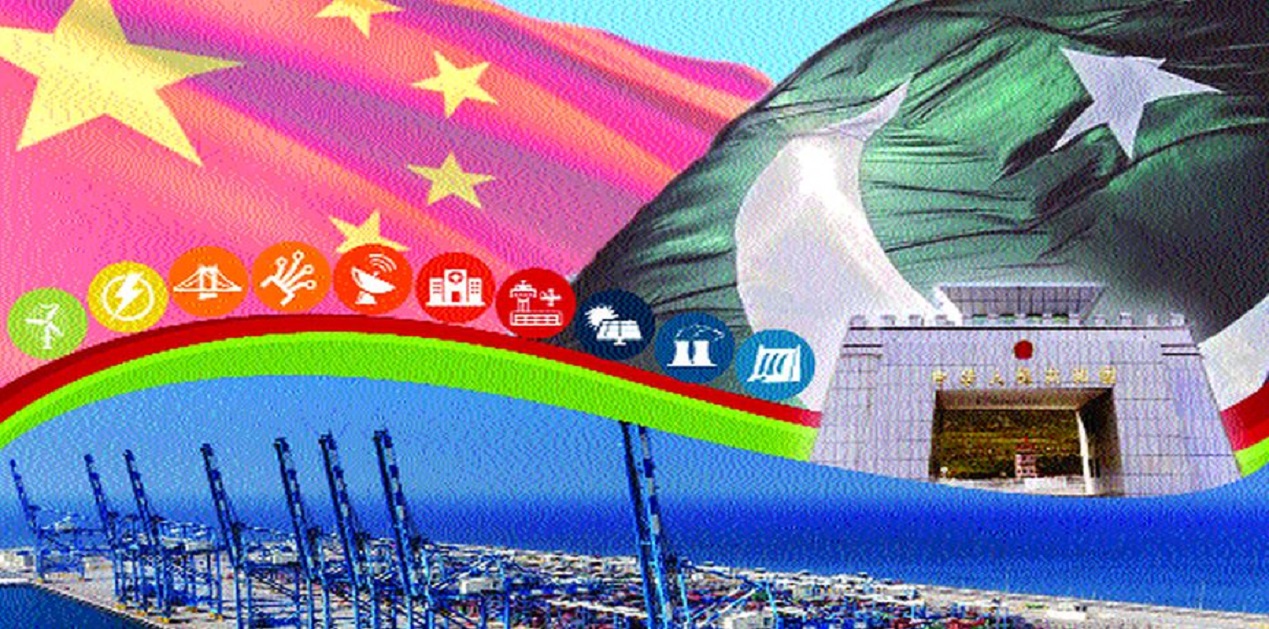Covid-19 crisis has compelled the world to re- envision its strategies of cooperation and contestation with China. International community has demanded an investigation of the origin of virus putting the spotlight firmly on China. However, these unprecedented times have not stopped Pakistan from supporting and cooperating with its “all weather friend”. In fact there is much enthusiasm in Pakistan and China over the renewed interest in China Pakistan Economic Corridor (CPEC) as flurry of new hydropower projects have been signed. Recently Imran Khan provocatively declared, “Pakistan will complete CPEC at all costs”.1 He also stated “it is an excellent project for Pakistan’s socio-economic development”. 2 Clearly, Pakistan’s ruling elites are in denial of the predatory behaviour of China and are oblivious of how CPEC is a road to nowhere and is not viable. The rosy narrative around CPEC is zealously controlled by Pakistani and Chinese elites by stamping out the criticism.3 Hence it becomes pertinent to deconstruct the grim reality of CPEC and also expose China’s misdeeds. The project faces gargantuan challenges on myriad fronts that beset the cautious optimistic perspective.
The China Pakistan Economic Corridor a flagship component of China’s ambitious Belt and Road Initiative was billed as a game changer by the Pakistani elites. Officially launched in April 2015, the economic corridor that would link Kashgar in Xinjiang to Gwadar in Balochistan five years later has entered its second phase. While the first phase was essentially about electricity projects and railway lines the second phase has special emphasis on development of special economic zones, agriculture, industry, trade and science and technology. Initially US$ 46 billion was pledged towards project implementation over a period of 15 years. This was later increased to US$ 62 billion. Though the project has entered its second phase it remains riddled with ambiguities. The plan’s details- the term of the investments and loans, the full extent of the projects and the overall costs to Pakistan remain opaque. The aggressive and non-transparent Chinese financing terms have exacerbated Pakistan’s pre-existing debt and balance of payment crisis. Largely as a result of rising CPEC-related import spending, Pakistan current account deficit has increased nearly 700 percent since CPEC’s inception in 2015.4 Covid-19 crisis has exacerbated the already parlous state of Pakistan’s economy. Alarmingly, Pakistan’s total external debt stands at $111 billion.5 According to the IMF’s estimates, the federal government’s debt has surged from 80.4 percent of the GDP pre-covid-19 to 85.4 percent post-covid-19. Pakistan owes more than $22 billion to China largely as the result of CPEC. According to one estimate Islamabad could well end up repaying Beijing a CPEC-related investment portfolio initially worth USD 50 billion (through a loan-and-interest scheme) something amounting to USD 90 billion over a span of 30 years.6 However, Pakistan knows that it will not be able to pay China back and will slowly lose the sovereignty of its own land. Recently Pakistan has requested that Beijing forgive or re-profile its debt and allow for the renegotiation of power purchase agreements. The truth is CPEC is a debt trap. In the study done by Centre for Global Development, Pakistan is one of the eight most vulnerable countries that are under high risk of debt distress.7 It states that Pakistan’s risks of debt distress are the relatively high interest rates being charged by China. Unlike the 2-2.5 percent “concessional rate” given to some China Exim Bank customers, reports indicate that some of Pakistan’s loans reflect rates as high as 5 percent.8 Hence the financial agreements are heavily skewed in favour of Chinese.
In fact the vast majority of CPEC projects, which are commercial electricity projects, are turning out to be expensive and unaffordable. There are upfront high costs, high interest rates and poor fuel choices that is making the electricity expensive in Pakistan. The recent revealing 278-page report by the “Committee for Power Sector Audit, Circular Debt Reservation, and Future Road Map” exposes widespread corruption and widespread exploitation of Pakistan’s resources by China. The report has listed malpractices to the tune of 100 billion Pakistani rupees ($625 million) in the independent power-generating sector, with at least a third of it relating to Chinese projects.9 The internal report indicts China for corruption. The inquiry report revealed that the $1.7 billion power transmission line project of the China-Pakistan Economic Corridor was 234% more expensive than a similar project in India with better technology.10
CPEC is not an altruistic attempt by China to uplift Pakistan’s economy and by no means is a gift to Pakistan. In fact it is a geostrategic instrument consciously designed to ensnare Pakistan into unsustainable levels of debts, and thereafter using that leverage to generate political influence. While CPEC lacks any economic logic and can be disastrous for Pakistan’s dwindling economy the biggest challenge that it faces is the security of the project. Terrorists have been targeting Chinese investments and citizens. CPEC faces an increased threat from Baluchistan, which is home to CPEC’s key project Gwadar port. Baloch separatists have carried out attack against Chinese workers and engineers. A report by International crisis group titled “China Pakistan Economic Corridor: Opportunities and Risks” highlights the rising discontent among the locals in Baluchistan because the province will receive no direct financial benefits from Gwadar port, and it is becoming a militarized zone displacing locals and depriving them of economic lifelines.11
Further there is a renewed anti- Chinese sentiment against the Beijing intentions in CPEC. The local population especially in Baluchistan, Gilgit- Balitistan and Pakistan occupied Kashmir (POK) are voicing their concerns as CPEC is being violently implemented against their express will. The official rhetoric regarding the CPEC overshadows the criticisms and reports about a number of shortcomings. The locals complaint of land acquisition and land grabs, forced displacement of people, guided/forced migrations, resource exploitation, environmental problems (e.g., pollution, deforestation), and especially human rights violations.12 There have been periodic protests against CPEC projects; the most recent ones were in Baluchistan, Sindh, Pok and Gilgit-Baltistan against the newly signed Azad Pattan and Kohla hydropower projects. The protesters highlighted various concerns like subjugation of resources by Chinese, environmental impact of the dams and lack of inclusive development.
Though CPEC has been institutionalized and there is a lot of enthusiasm on the high tables, there seems to be anger and anti-Chinese sentiments amongst the local population. While China can buy off the elites in Pakistan, it has failed to win the confidence of the locals and that can be a recipe for disaster. Hence the future of CPEC is bleak and it remains marred with paradoxes and complexities. CPEC will be yet another example of China’s perfidy that will end up damaging Pakistan by making it as a client state.
References-
- “Pakistan will complete CPEC at all costs, says Imran Khan”, The Hindu, July 4, 2020
- Ibid.
- MadhiaAfzal, “At all costs: How Pakistan and China control the narrative on China Pakistan Economic Corridor”, Brookings, June 2020
- James Perishing, “Can CPEC meet Pakistan’s Development Goals?”, Reconnecting Asia, July 11, 2019
- Shishir Gupta, “Pak’s troubled economy is hurting more than Imran Khan wants to believe”, Hindustan Times, April 26, 2020
- Salman Siddiqui, “Pakistan will be paying China $90b against CPEC-related projects”, The Express Tribune, March 12, 2017
- John Hurley, Scott Morris, and GailynPortelance, “ Examining the Debt Implications of the Belt and Road Initiative from a Policy Perspective”, Centre for global development, March 2018
- Ibid.
- HussainHaqqani, “Pakistan discovers the high cost of Chinese investment”, The Diplomat, May 18, 2020
- Ibid.
- “China Pakistan Economic Corridor: Opportunities and Risks”, International Crisis Group, June 29, 2018
- Siegfried O. Wolf (2019), “The China Pakistan Economic Corridor of the Belt and Road Intiative, concept, context and assessment”, Springer, Switzerland
(The paper is the author’s individual scholastic articulation. The author certifies that the article/paper is original in content, unpublished and it has not been submitted for publication/web upload elsewhere, and that the facts and figures quoted are duly referenced, as needed, and are believed to be correct). (The paper does not necessarily represent the organisational stance... More >>
Image Source: https://www.thestatesman.com/wp-content/uploads/2017/08/1498783211-cepec.jpg











Post new comment